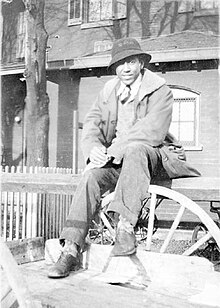No Crystal Stair is a 1997 novel by Canadian author Mairuth Sarsfield.

Helene Johnson was an African-American poet during the Harlem Renaissance. She is remembered today for her poetry that captures both the challenges and the excitement of this era during her short-lived career.
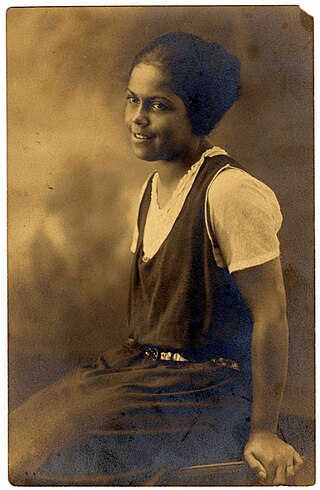
Gwendolyn B. Bennett was an American artist, writer, and journalist who contributed to Opportunity: A Journal of Negro Life, which chronicled cultural advancements during the Harlem Renaissance. Though often overlooked, she herself made considerable accomplishments in art, poetry, and prose. She is perhaps best known for her short story "Wedding Day", which was published in the magazine Fire!! and explores how gender, race, and class dynamics shape an interracial relationship. Bennett was a dedicated and self-preserving woman, respectfully known for being a strong influencer of African-American women rights during the Harlem Renaissance. Throughout her dedication and perseverance, Bennett raised the bar when it came to women's literature and education. One of her contributions to the Harlem Renaissance was her literary acclaimed short novel Poets Evening; it helped the understanding within the African-American communities, resulting in many African Americans coming to terms with identifying and accepting themselves.

Sonia Sanchez is an American poet, writer, and professor. She was a leading figure in the Black Arts Movement and has written over a dozen books of poetry, as well as short stories, critical essays, plays, and children's books. In the 1960s, Sanchez released poems in periodicals targeted towards African-American audiences, and published her debut collection, Homecoming, in 1969. In 1993, she received Pew Fellowship in the Arts, and in 2001 was awarded the Robert Frost Medal for her contributions to the canon of American poetry. She has been influential to other African-American poets, including Krista Franklin. Sanchez is a member of The Wintergreen Women Writers Collective.
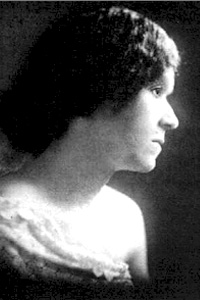
Georgia Blanche Douglas Camp Johnson, better known as Georgia Douglas Johnson, was a poet and playwright. She was one of the earliest female African-American playwrights, and an important figure of the Harlem Renaissance.

Margaret Allison Bonds was an American composer, pianist, arranger, and teacher. One of the first Black composers and performers to gain recognition in the United States, she is best remembered today for her popular arrangements of African-American spirituals and frequent collaborations with Langston Hughes.

The Harlem Renaissance was an intellectual and cultural revival of African-American music, dance, art, fashion, literature, theater, politics and scholarship centered in Harlem, Manhattan, New York City, spanning the 1920s and 1930s. At the time, it was known as the "New Negro Movement", named after The New Negro, a 1925 anthology edited by Alain Locke. The movement also included the new African-American cultural expressions across the urban areas in the Northeast and Midwest United States affected by a renewed militancy in the general struggle for civil rights, combined with the Great Migration of African-American workers fleeing the racist conditions of the Jim Crow Deep South, as Harlem was the final destination of the largest number of those who migrated north.
"Note on Commercial Theatre" is a poem by Langston Hughes written in 1940 and republished in 2008.
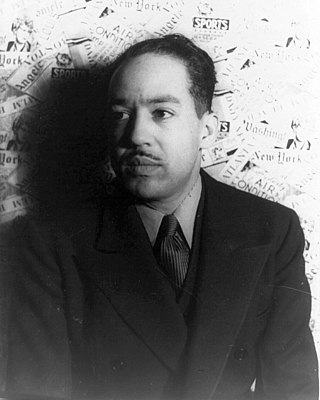
James Mercer Langston Hughes was an American poet, social activist, novelist, playwright, and columnist from Joplin, Missouri. One of the earliest innovators of the literary art form called jazz poetry, Hughes is best known as a leader of the Harlem Renaissance. He famously wrote about the period that "the Negro was in vogue", which was later paraphrased as "when Harlem was in vogue."

Prentiss Taylor was an American illustrator, lithographer, and painter. Born in Washington D.C., Taylor began his art studies at the Corcoran Gallery of Art, followed by painting classes under Charles Hawthorne in Provincetown, Massachusetts, and training at the Art Students League in New York City. In 1931, Taylor began studying lithography at the League. He became a member of one of the most important printmaking societies in America at that time, the Society of American Graphic Artists. Taylor interacted and collaborated with many writers and musicians in his time in New York in the late 1920s and early 30s. This was in the emergence of the Harlem Renaissance. Among his close friends and colleagues were Langston Hughes and Carl Van Vechten.
Montage of a Dream Deferred is a book-length poem suite published by Langston Hughes in 1951. Its jazz poetry style focuses on scenes over the course of a 24-hour period in Harlem and its mostly African-American inhabitants. The original edition was 75 pages long and comprised 91 individually titled poems, which were intended to be read as a single long poem. Hughes' prefatory note for the book explained his intentions in writing the collection:
In terms of current Afro-American popular music and the sources from which it progressed—jazz, ragtime, swing, blues, boogie-woogie, and be-bop—this poem on contemporary Harlem, like be-bop, is marked by conflicting changes, sudden nuances, sharp and impudent interjections, broken rhythms, and passages sometimes in the manner of a jam session, sometimes the popular song, punctuated by the riffs, runs, breaks, and disc-tortions of the music of a community in transition.
"The Weary Blues" is a poem by American poet Langston Hughes. Written in 1925, "The Weary Blues" was first published in the Urban League magazine Opportunity. It was awarded the magazine's prize for best poem of the year. The poem was included in Hughes's first book, a collection of poems, also entitled The Weary Blues.

"The Negro Speaks of Rivers" is a poem by American writer Langston Hughes. Hughes wrote the poem when he was 17 and crossing the Mississippi River on the way to visit his father in Mexico. It was first published the following year in The Crisis, starting Hughes's literary career. "The Negro Speaks of Rivers" uses rivers as a metaphor for Hughes's life and the broader African-American experience. It has been reprinted often and is considered one of Hughes's most famous and signature works.
Eva Rutland was an author of more than 20 romance novels. She was the author When We Were Colored: A Mother’s Story and, No Crystal Stair and is the winner of the 2000 Golden Pen Award for Lifetime Achievement.
Gloria Catherine Oden was an American poet, editor and retired professor of English. She was nominated for the Pulitzer Prize in 1979 for Resurrections, a collection of poems that responded to the unsolved murder of her mother and sister in their home in Washington, D.C.
Songs of the Harlem River: Forgotten One Acts of the Harlem Renaissance is a collection of five one-act plays written between 1920 and 1930 by several African-American playwrights at the time including Marita Bonner, Ralf M. Coleman, Georgia Douglas Johnson, Willis Richardson, and Eulalie Spence. Also included are poems by Sterling A. Brown, Langston Hughes, and Jessie Fauset.
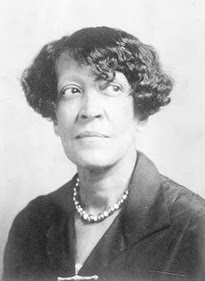
Carolina Mercer Langston was an American writer and actress. She was the mother of poet, playwright and social activist Langston Hughes.
Richard Gregory Christie is an American author and illustrator of picture books, chapter books, middle grade novels, and album covers best known for his Coretta Scott King Award-winning books No Crystal Stair: A Documentary Novel of the Life and Work of Lewis Michaux, Harlem Bookseller, Bad News for Outlaws: The Remarkable Life of Bass Reeves, Deputy U. S. Marshal, and Brothers in Hope: The Story of the Lost Boys of Sudan, Only Passing Through, and the NAACP Image Award-winning Our Children Can Soar: A Celebration of Rosa, Barack, and the Pioneers of Change.
"Harlem" is a poem by Langston Hughes. These eleven lines ask, "What happens to a dream deferred?", providing reference to the African-American experience. It was published as part of a longer volume-length poem suite in 1951 called Montage of a Dream Deferred, but is often excerpted from the larger work. The play A Raisin in the Sun was titled after a line in the poem.
Mary Sampson Patterson Leary Langston was an American abolitionist, the first African-American woman to attend Oberlin College, and wife of notable abolitionists Lewis Sheridan Leary and Charles Henry Langston. She was also the grandmother of Langston Hughes and raised him for part of his childhood, inspiring his future work.
